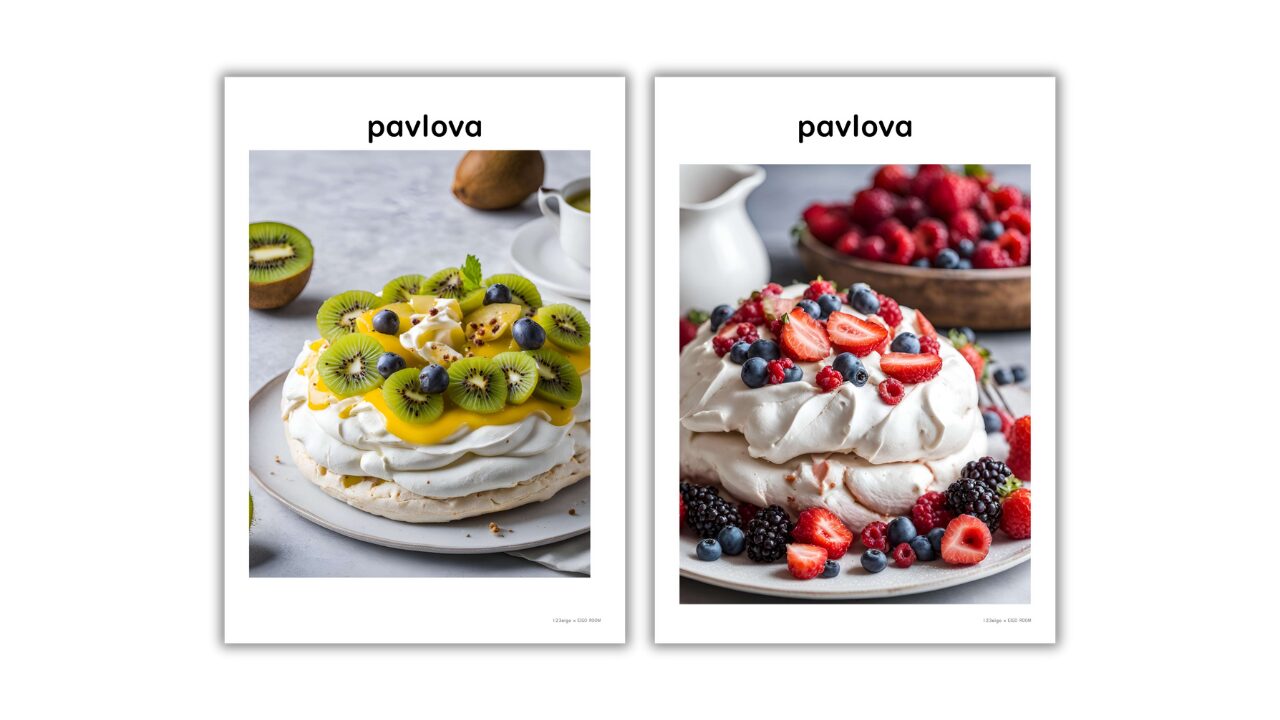EIGO ROOMの【授業・レッスン実践レポ】では、現役の先生方に授業やレッスンの実践を紹介しています。今回は123eigoを運営するクリエイターであり、小学校で英語を教えるオーストラリア出身のギャビン先生に、この記事を書いていただきました。
This is a report on the final lesson in Unit 7 ‘What do you want?’ for 4th grade students.
4年生『Let's try!2』Unit7「What do you want?」Pavlovaを作ろう!の授業実践のレポートです。英語と日本語でお届けします。
In the previous lessons, students became familiar with asking and answering about different things that they want. In Lesson 3, students made a fruit parfait for their classmate, and in Lesson 4 students made a pizza. In today’s final lesson, ‘Lesson 5’ students will have the unique opportunity to learn a little about Australian culture while making a pavlova.
これまでの授業で、児童は欲しいものについて尋ねたり答えたりすることに慣れてきました。レッスン3ではフルーツパフェ、レッスン4ではピザを友達のために作りました。そして、最終レッスンとなる本時のレッスン5では、パブロヴァを作りながら、オーストラリアの文化について学ぶというオリジナル授業を考えました。

授業者:Gavin Sensei/ ギャビン先生 (123eigo)
Creator of 123eigo, a website providing worksheets and activity ideas for school English teachers. Now teaching in an elementary school.
ウェブサイト123eigoのクリエイター。小中学校の英語教師にワークシートやアクティビティのアイデアを提供している。現在は小学校で英語を教えている。
本時について
学年・単元名
4年生『Let's try!2』「what do you want?」
単元
5/5時間
単元の目標
By making a pavlova for a classmate, students will ask and answer about what ingredients they want. Students will also learn about a famous Australian dessert.
友達への「パブロヴァ作り」を通して、欲しい材料について尋たり、答えたりする。また、オーストラリアの有名なデザートであるパブロヴァについても学ぶ。
語彙&言語材料
〈語句〉
(food) pavlova, strawberry, blueberry, raspberry, kiwi fruit, passion fruit, mango, pineapple, whipped cream
(numbers) one, two, three, four, etc
〈表現〉
What do you want?
I want ~.
How many?
A pavlova is a meringue-based round cake that is a traditional Australian or New Zealand dessert. The inside is soft while the crust is crispy. It is decorated with different kinds of fruit.
パブロヴァはメレンゲを土台とした丸い形をしたケーキで、オーストラリアやニュージーランドの伝統的なケーキです。中はふわっとしていますが、メレンゲの外側はパリッとし、上には様々な種類のフルーツが飾られています。

By the end of the unit, students should be comfortable using the expression ‘what do you want? ‘I want…’, and ‘How many?’. So it’s a great opportunity for students to learn about a different country while speaking confidently in English to another classmate. Designing and producing a pavlova for a classmate is also an exciting and fun exercise that students really enjoy.
これまでの単元で、児童らは ”What do you want?” や ”I want..."、 "How many?"という表現に慣れ親しんできました。なので本時では、自信をもって英語での会話を楽しむことができ、また同時に自分とは異なる国の文化について学ぶことができると良い機会だと考えました。また、自分で描いたパブロヴァをプレゼントをすることで、自分自身も楽しみつつ友達も喜ばせることもできます。
板書

授業の流れ
1. Introduction
- Greet the students. Check with students about the day and weather. Tell the students today’s lesson goal "Make a pavlova for your friend".
挨拶をする。曜日と天気を確認する。本時のレッスン目標「パブロヴァを作ろう」を伝える。
ポイント
We will make it for a classmate just like when we made the parfait and pizza. By reminding students of what they did in previous lessons they can feel comfortable with the lesson content for today’s lesson.
パフェやピザを作った時と同じように、友達のために作ります。前時までの内容を想起させることで、児童たちは本時の内容に安心して臨むことができます。
2. Let’s chant
- Practice the conversation expressions. Students will practice the conversation expressions used for the later activity by singing the chant on page 27 of the textbook.
教科書『Let's try!2』27ページのチャンツを歌いながら、本時のアクティビティで使う会話表現を練習をする。
ポイント
The chant is repetitive but helps build rhythm and fluency for the target language.
チャンツをは繰り返し歌い、ターゲットワードのリズムや流暢さを身につけます。
ポイント
I usually write the lyrics of the song on the blackboard. I ask the students to tell me what comes next in the song. It’s a good way to get the students to use their prior knowledge of the song and the target expressions. In addition, I place the flashcards for the fruit on the board. This helps students know what lyrics will come next.
歌詞を黒板に書きながら、次の歌詞が何かを児童に尋ねます。これは学んだ歌詞やターゲットワードをアウトプットするための有効な手段です。さらに、果物のフラッシュカードを黒板に貼っていくことで、歌詞の内容を視覚化します。
3. Explanation and Demonstration
- Announce to students that they will make a pavlova for a classmate today.
友達のためにパブロヴァを作ることを伝える。 - Use the picture flashcards to show the students what a pavlova is.
パヴロヴァのピクチャーカードを使い、説明をする。教材リンク - Show the flashcards of the ingredients that students will use to make the pavlova and practice asking ‘What do you want?’ and ‘I want ~’. I do this by practicing with the whole class and asking particular students.
パブロヴァを作るための果物のフラッシュカードを見せ、"What do you want?" や "I want ~"の表現と一緒に練習をする。クラス全体で練習をしたり、特定の児童に尋ねたりする。 - Ask the homeroom teacher to help me make a pavlova for them to demonstrate how to do the activity. Since it’s the third time we have done this type of activity I don’t spend as much time going step by step.
T2の先生に手伝ってもらいながらパブロヴァ作りのデモンストレーションを行う。これまでも同じような活動をしているので、ここでは細かい説明は行わない。
ポイント
I explain to them that while the base is always the same, there are many different ways to decorate with different kinds of fruit. So even though they have never eaten one before, they shouldn’t worry about what ingredients to choose. My only advice is that it should be colorful because it’s usually eaten at parties.
ケーキのベースが同じでも、様々なフルーツの様々な飾り方があることを説明します。もし食べたことがなくても、どんな果物を選べばいいか心配する必要はないことを伝えます。ただ、パーティーで食べることが多いので、色とりどりにするとよいというアドバイスを添えます。
4. Activity - Let’s make a pavlova!
- The students turn their desks to face each other. They write their names on the worksheets and exchange them with their partner. They then play rock, scissors, paper to decide who will ask questions first.
児童らは机を向かい合わせにする。ワークシートに名前を書き、パートナーと交換する。じゃんけんでどちらが先に質問するかを決める。教材リンク - After choosing the ingredients, the students change roles. When they have also finished making notes of what their partner wants, students then take time to draw the pavlova.
材料を選んだら、役割を交代する。パートナーが欲しいものをメモし終えたら、パブロヴァの絵を描く。 - When both students have finished drawing, they return their worksheets back to their classmates, saying ‘Here you are’ and ‘Thank you’.
二人とも描き終わったら"Here you are." "Thank you."と言って、ワークシートをパートナーに返す。

What do you want?
I want passionfruit.


How many?
3, please.


ポイント
I usually do set a limit on how many ingredients students can choose to save time and make for a neater drawing.
選べる食材の数に制限を設けてることが多いです。そうすることで時間を節約し、児童らが絵を描く時間十分に確保することができます。
ポイント
Students should be reminded that they are making a present for their classmate so they should take their time to make something they would want to receive.
友達へのプレゼントとして自分がもらいたいと思うようなものを、時間をかけて丁寧に作ってほしいということを伝えます。
5. Reflection
- Ask students to walk around for a minute and look at the designs made by other students in the class. When the time is up I ask them who they think has a really nice pavlova and why.
1分間教室を歩き回り、クラスの他の友達が作ったデザインを見るよう児童らに伝える。時間が来たら、誰のパブロヴァが本当に素敵だと思ったか、またそう思った理由を尋ねる。
6. End of lesson
- Give out 4 awards to students who I think worked particularly hard. Each award is for a different type of student. Such as someone who volunteered, someone who tried their best, etc.
レッスンの最後に、とくに頑張ったと思う児童4人に賞を贈る。それぞれの賞は、異なるタイプの児童に贈る。ボランティアをした人、ベストを尽くした人など。
授業を終えて
In this unit, students also made parfaits and pizzas for their classmates. I always make sure that they do it with a different student each time. It’s a good opportunity for students to work with classmates that they might not usually interact with.
この単元では、児童らは友達のためにパフェやピザも作りました。毎回違う友達とペアになるよう工夫しています。児童にとっては、普段あまり交流のない友達と一緒に学習に取り組むよい機会だと考えています。
In previous years I have also had students design Christmas sweaters or Christmas cakes. It is a really nice activity where students can use the language and create something as a result of it. I know that some teachers like to have students glue ingredient pieces on the worksheet instead. I think this is fine, but the preparation is very time consuming. I also believe that most students like to draw and because every student has a different style of drawing and creativity it can result in more interesting designs and ideas.
クリスマス・セーターやクリスマス・ケーキをデザインさせる年もあります。こういった活動は、児童らがターゲットワードを使い、その成果物を残すことのできるとてもよい活動です。似たような活動として、切った材料をワークシートに貼らせる活動もあります。それもよい活動だとは思いますが、準備にとても時間がかかります。また、多くの児童が絵を描くのが好きだと思いますし、児童一人ひとりの絵のスタイルがあり、また創造力も様々なので、描く活動の方がより面白いデザインやアイデアが生まれます。
